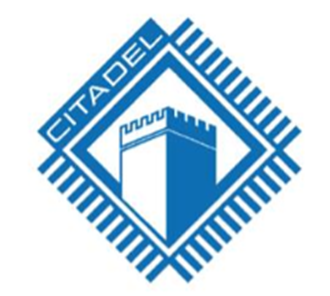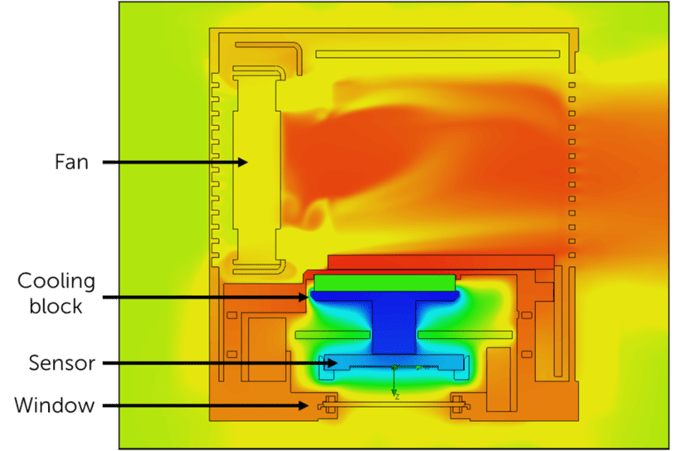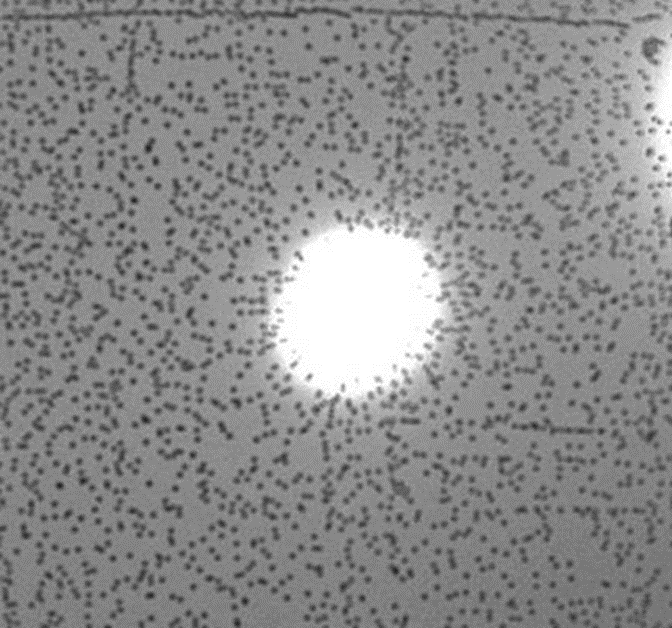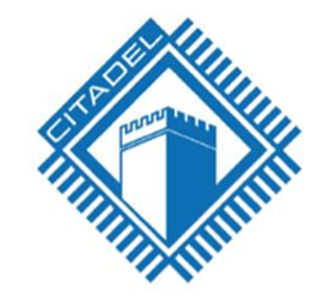Citadel Chamber Design
Key Points
- Teledyne Photometrics' cooled cameras use Citadel chamber design technology to protect scientific camera sensors
- Citadel technology has been refined over 40 years, resulting in industry-leading product reliability
- Good chamber design is paramount for effective sensor cooling and camera longevity. Poor chamber design results in condensation and inferior image quality
- Citadel chamber design has a 10-year Mean Time Between Failure and results in less than 0.1% chamber failures
Introduction
Scientific cameras are an integral part of any imaging system, featuring cutting-edge sensors that enable researchers to obtain high-quality, high sensitivity images of their sample(s) of choice. These sensors feature complex electronics and millions of silicon pixel elements, and as a result are fragile and highly susceptible to damage, even from moisture and particulates in the air. For this reason, our sensors are safely encapsulated in a protective chamber.
In this article, we describe 'Citadel', our chamber technology which involves the design principles we have refined for over 40 years to ensure the highest grades of sensor protection. Teledyne Photometrics' confidence in the Citadel design is reflected in our industry-leading standard product warranty. Teledyne Photometrics products also have an average Mean Time Between Failure (MTBF) of close to 10 years, in large part thanks to the implementation of the Citadel chamber design across our cooled camera product lines.
Sensor Chamber
Teledyne Photometrics use an extremely durable chamber to control the local environment of the image sensor, isolating it from dust, moisture, and physical damage. Incoming light passes through a window into the chamber and onto the sensor, where the signal from your sample can be quantified and digitized into an image. The distance between the window and the sensor is important, both in terms of optics and the chamber size, and our design ensures these two components are the ideal distance apart.
The chamber is also important for cooling, as seen in Fig.1 . The sensor processes involved with reading out signal during exposure cause heat to build up in the sensor, causing the release of thermal electrons which contribute undesirable noise known as dark current. Cooling can greatly decrease the effects of dark current.
typical temperature scaling.
The sensor benefits from cooling, but the cooling needs to be steady (to avoid drift) and evenly distributed across the sensor (to minimize dark current non-uniformity). As seen in Fig.1, our highly controlled cooling processes result in uniform sensor temperatures and avoids variations in temperature and subsequent artifacts.
Many cameras for amateur astronomy require cooled designs to reach the desired noise levels at long exposures, deploying cooling formats that experience frequent failures. Cameras designed for amateur astronomy lack the rigorous design needed for critical applications in biomedical testing.
The downtime for scientific researchers and the service & replacement cost for high volume OEM (Original Equipment Manufacturer) customers is significant when these types of cameras are used. It is estimated that net loss for a system manufacturer that results from a failed chamber can range from $60,000 USD to $100,000 USD per system*. For this reason, we encourage you to request service records, MTBF, and other product reliability data during a camera selection process.
*See Table 1 in the appendix for calculations on this estimation. This value has been validated with industry sources.
Backfilling
The local atmosphere in the chamber needs to be free of dust and moisture, which is why our chamber design is 'back-filled' , a process that involves removing the air from the chamber, testing the system under high vacuum to ensure chamber integrity, filling the chamber with inert dry nitrogen gas, and hermetically sealing the chamber to avoid any contamination from the exterior atmosphere. This results in a long-lasting camera design where the sensor is protected and imaging performance is maintained over the long term. The path to success with back-filled sensors relies on two major design considerations: the mechanical design of the chamber and the materials used for sealing.
An alternative to back-filling is vacuum sealing, but this method is used less frequently due to being a more difficult manufacturing process and resulting in more expensive and physically larger cameras.
Citadel is Teledyne Photometrics' highly scalable chamber sealing technology, based on our long pedigree working with scientific cameras and continually making improvements in the scientific imaging field.
Chamber Failures
Any failures with design and sealing can result in 'moisture ingress' , the escape of the inert chamber atmosphere, and the introduction of external moisture into the chamber. While there are many possible causes for moisture ingress, the main symptom is the same: condensation on the sensor. This moisture can interfere with the optics and electronics of a camera and severely impact the image quality, as seen in Fig.2.
image quality and potentially damaging internal electronics.
Poor chamber design typically results in condensation as chambers need to be moisture controlled over the long term. Good chamber design needs to account for mechanical stress and strain, temperature changes during camera activity/inactivity, the material used to construct and coat the chamber, and even the type of adhesive used to secure components together. Chamber failures and the resulting condensation result in serious sunk costs for any lab, as well as loss of imaging time and data collection, which would impact the momentum of projects that need imaging to gather results.
As a result of Citadel design principles, over the last six years Teledyne Photometrics has had a condensation failure rate of less than 0.1%.
If you have experienced condensation with any scientific camera, a Teledyne Photometrics representative would be happy assist you in finding out more about the most reliable scientific cameras on the market. Contact us at: www.photometrics.com/contact
Citadel Chamber Design
Our Citadel principles are used when designing all our cooled scientific camera chambers, determining what makes a good chamber based on our accumulated 40 years' experience and pedigree.
As well as finely tuned design principles, our approach to quality for chambers also follows into our manufacturing and quality control processes. Teledyne Photometrics leak test every manufactured chamber in an ISO Class 6 cleanroom to ensure that a bad chamber never leaves the building, making fears of chamber failure and condensation a thing of the past.
Because of the industry-leading design and quality assurance processes, Teledyne Photometrics' cooled scientific cameras boast an average Mean Time Between Failure of 10 years. Camera condensation is extremely rare, often in the low single digits of cases per year despite being used on more than a dozen high-volume camera models.
Many other scientific imaging manufacturers'incorrectly state that chamber failures are an unavoidable consequence of using a backfilled camera, going as far as stating in manuals and tech notes that such a camera is expected to last 3 to 4 years. Citadel chamber technology demonstrates that this is a lack of careful design and manufacturing of their products.
Appendix: Estimation on cost of a failed OEM camera in the field.
It is estimated that the cost of a failed camera chamber for a system manufacturer can be as high as $100,000 USD per camera.
Based on the downtime cost of $200 USD/hour. Does not include intangible reputation damage, labor costs, shipping charges, and other knock-on costs. This estimate was validated for accuracy with customers.
Further Reading
Back To Exclusive Features
Book A Demo Today
Download As PDF